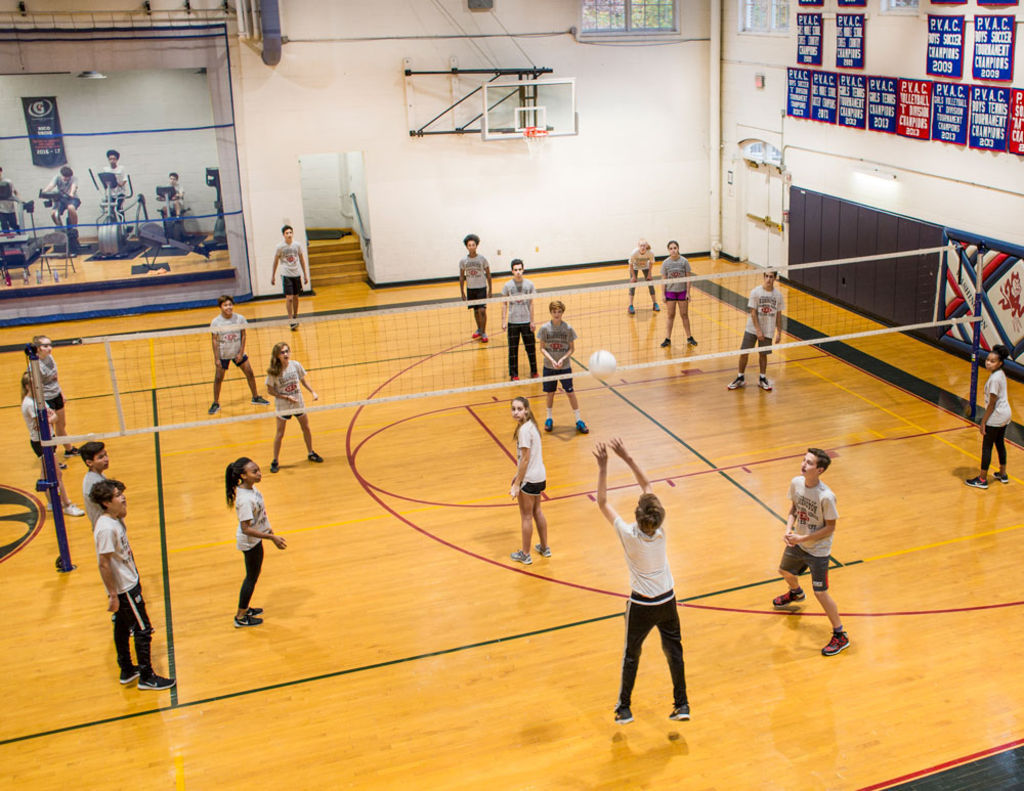A physical education class is part of every WIS student’s curriculum in sixth through 10th grade. Students go to the gym, field, or weight room three times each cycle to participate in physical activities, from badminton to Zumba. It has always been the custom to use class time to make sure students stay in shape.
But, the notion that a traditional gym class is essential for students is rapidly changing. More and more schools, including many local independent schools, are finding alternatives to P.E. class. WIS is not one of them.
At WIS’ neighboring Maret School, P.E. is not part of the curriculum during the school day. Students are required to either play a varsity or junior varsity sport or do an after-school “Lifetime Activity”, such as yoga or dance. A third option for students is to do an “Independent P.E. Program”, where students can use activities outside of school as their physical education.
“It allows flexibility in their schedule during the day and provides a wide range of options after school,” Maret Athletic Director Liz Hall said.
The WIS Upper School curriculum reads, “The aims of the Physical Education course are to improve physical fitness: muscular strength, flexibility, muscular endurance, body composition, and cardiovascular endurance.”
For most students, these goals are not achieved during P.E. class. We all dread fitness testing at the beginning and end of each year, where we supposedly find out how fit we are based on how many pushups we can do in a minute and how long it takes us to run five-and-a-half laps around the field. We’re always told that if we’re working hard in P.E., our times will improve throughout the year. For some, they improve, but does that 15 seconds you shaved off of your endurance run really come from hard work during P.E. class?
Many students achieve WIS’ aims for P.E. outside of class, whether it’s on a WIS team, independently, or in organized activities outside of school. According to the WIS website, 60 percent of Middle and Upper School students participate on at least one school sports team. Many of those students play during multiple seasons. Other students take part in sports outside of school, from speedskating to water polo.
If students had to fulfill some type of P.E. requirement outside of class, sports team participation would increase, making some JV or varsity teams more competitive. Students who do not exercise outside of P.E. class would still be forced to find a way to stay in shape.

Also, getting rid of P.E. during the school day opens up three class periods each cycle. That could free up space in the upper and middle school day for new courses, seminars, or even free periods. Students complain about the uselessness of Life Skills, so WIS could use the former P.E. periods to add to or revamp the course. The new ninth and 10th grade Study Hall Seminar was also a hit for students, and some of the extra time from P.E. could be used to give students extra quiet time to get ahead on homework.
WIS Athletic Director Tom O’Mara claimed that WIS doesn’t have the facilities to take P.E. out of the school day. He mentioned that Maret uses Jelleff Recreation Center in Glover Park, in addition to their campus facilities, which include a soccer field, two gyms, and a large weight room to house their strong athletics program. WIS’ narrow soccer field, singular gym, and compact weight room are nothing compared to Maret’s state of the art athletic facilities.
Nonetheless, WIS could easily find space for after-school physical activities without interfering with school sports. Yoga or dance classes could take place in the student center, fitness classes could happen in the weight room and on the outdoor basketball court, and the crowd of people doing independent P.E. outside of school won’t need to be accounted for.
Also, right now is the perfect time for WIS to make the drastic change away from traditional P.E. classes. With O’Mara retiring at the end of next school year, Head of School Suzanna Jemsby is open to making large changes in the athletics program.
“I anticipate involving community members in thinking about big picture issues involving our athletics program,” Jemsby wrote in an email announcing O’Mara’s retirement. The P.E. program is a perfect example of a big picture issue regarding WIS athletics.
Finding an alternative to P.E. has no negatives. It will boost sports team participation, free up space in the school day, and give students the opportunity to exercise in ways they actually enjoy.
By Saul Pink



































































